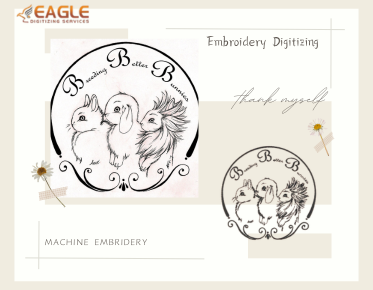Using Vector Files for Screen Printing vs Embroidery – What’s the Difference?
In the world of design and print, vector files have become an integral component, particularly in the areas of screen printing and embroidery. Both of these fields utilize vector files due to their scalability and precision, but the applications and implications in each field can be significantly different. Understanding these differences is crucial for businesses and designers striving to optimize their processes.
The Basics of Vector Files
Vector files are graphic images that use mathematical equations and geometric elements—such as points, lines, and shapes—to represent images in computer graphics. Unlike raster images, which are made up of pixels, vector images can be scaled infinitely without losing quality. This makes them particularly ideal for large-scale prints and designs that require precision and clarity.
Screen Printing with Vector Files
Screen printing is a popular method for printing images on various surfaces, including textiles, paper, and plastic. When using vector files for screen printing, designers leverage the clean lines and scalability that vectors provide. This process typically involves creating a stencil, or screen, for each color used in the design, allowing for vibrant, layered graphics. The precision of vector files ensures that each layer aligns perfectly, resulting in a professional finish.
The clarity offered by vector files means that businesses can reproduce logos and designs at any size—a critical aspect for marketing materials and branding. Businesses involved in custom t-shirt production, promotional merchandise, and large format printing often prefer screen printing due to its durability and vibrant color output.
Embroidery and Vector Files
In embroidery, vector files play a different yet equally important role. The process relies heavily on converting vector images into a format that embroidery machines can understand, often referred to as digitizing. Eagle Digitizing, for instance, provides an exemplary service where intricate designs are transformed into high-quality embroidery-ready files with precision and expertise. This process involves determining stitch types, density, and directions to accurately replicate the original vector image.
Embroidery applications demand a meticulous attention to detail, as the aesthetic of the final product—be it on caps, jackets, or corporate apparel—reflects a commitment to brand quality. With vector files, designers ensure the integrity and accuracy of the design from the digital realm to the embroidered product. Thus, businesses specializing in corporate branding, uniforms, and personalized gifts frequently opt for embroidery with vector conversion.
Choosing Between Screen Printing and Embroidery
The choice between screen printing and embroidery often hinges on factors such as the design's complexity, the material to be printed on, and the intended use of the product. Screen printing is typically more cost-effective for large quantities and designs requiring full-color images. In contrast, embroidery offers a sophisticated texture and depth, ideal for logos and design embellishments on premium apparel.
Additionally, each method has its limitations and advantages. Screen printing can achieve more complex color gradients and is generally faster for mass production, while embroidery offers durability and a premium feel. The decision ultimately depends on the project's specific needs, budget constraints, and aesthetic goals.
The Role of a Reliable Vector Conversion Service
Whether opting for screen printing or embroidery, a consistent and reliable vector conversion service is paramount. Companies like Eagle Digitizing specialize in raster to vector conversion, providing services that cater to both applications by offering tools and expertise to transform any design into a usable vector format. These services not only simplify the printing or embroidery process but also ensure a high-quality output that meets professional standards.
Looking Ahead: The Future of Printed Design Applications
As technology advances, the capabilities of both screen printing and embroidery continue to expand. With increasing automation in vector conversion and more sophisticated embroidery machines, the industry is poised for growth in both quality and efficiency. Future trends point towards more personalized design capabilities, allowing smaller businesses to compete with larger ones in the custom products market. As these technologies evolve, the demand for top-notch vectorization services will only increase, supporting businesses in achieving impeccable design fidelity and operational efficiency.
Thus, understanding the subtle yet significant differences in using vector files for screen printing versus embroidery can aid businesses in making informed decisions that align with their artistic and operational goals, ensuring that every project is executed with precision and style.



.png)